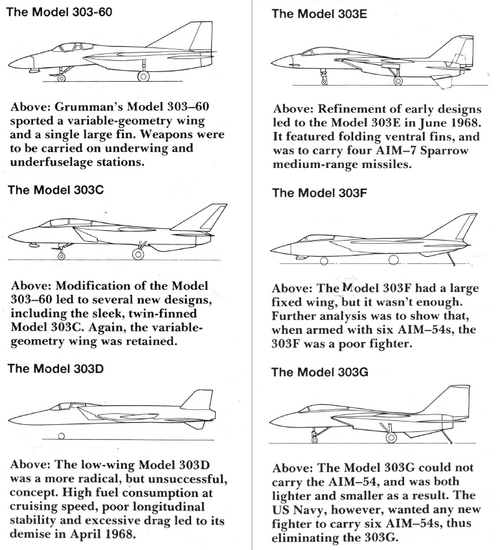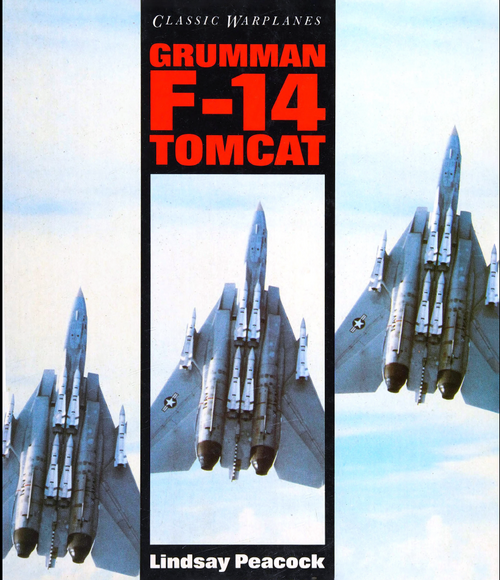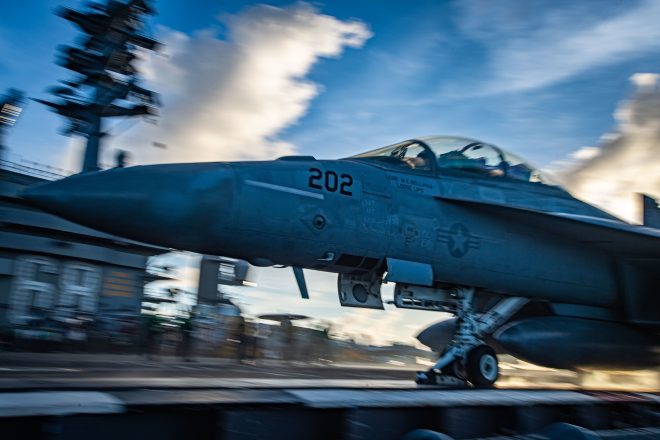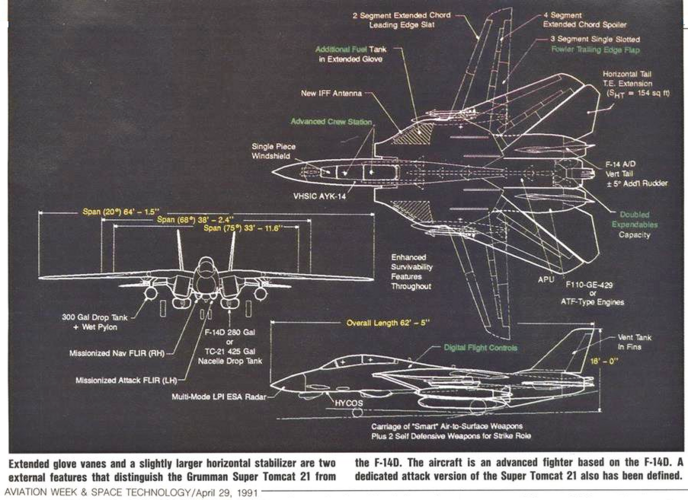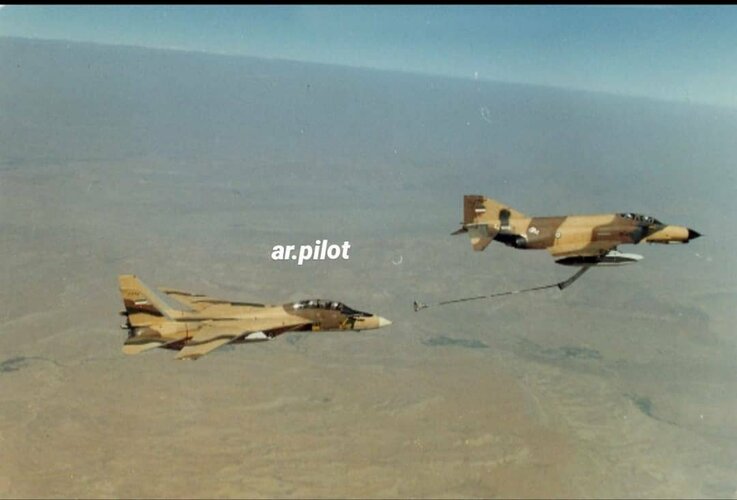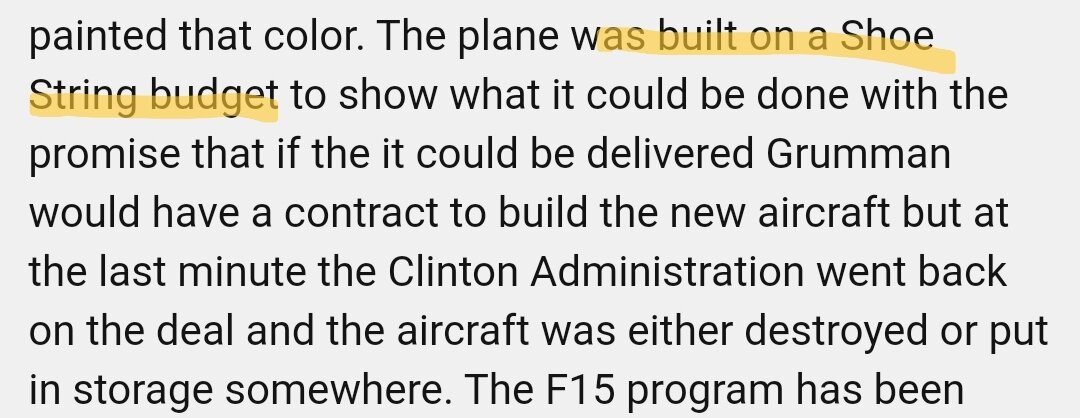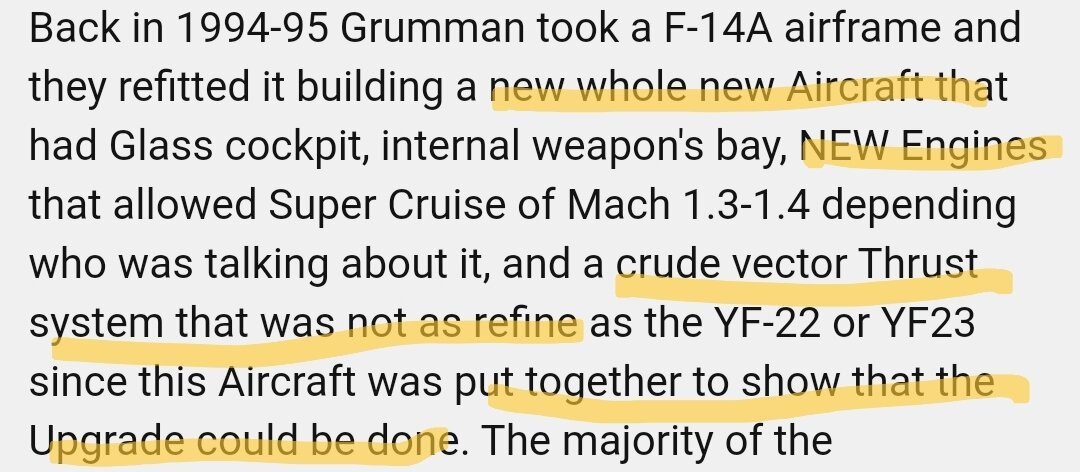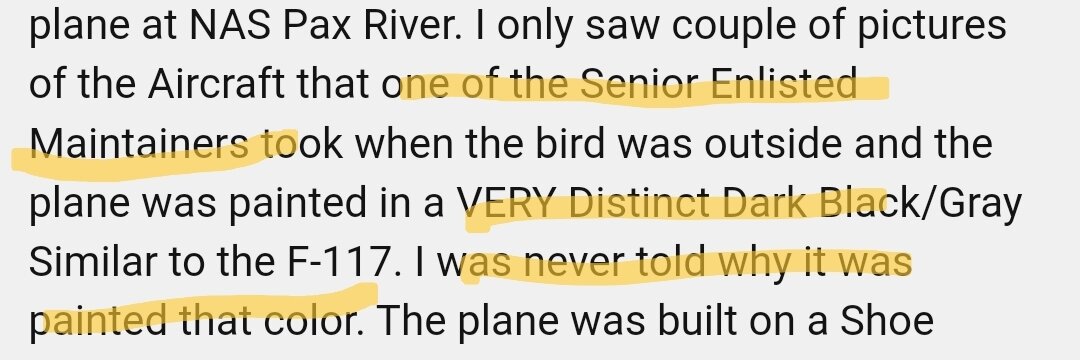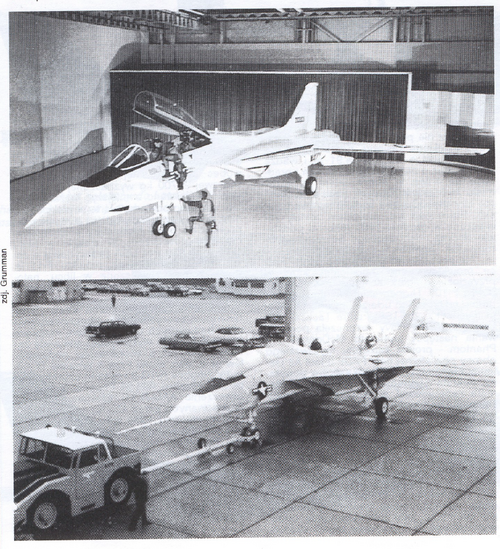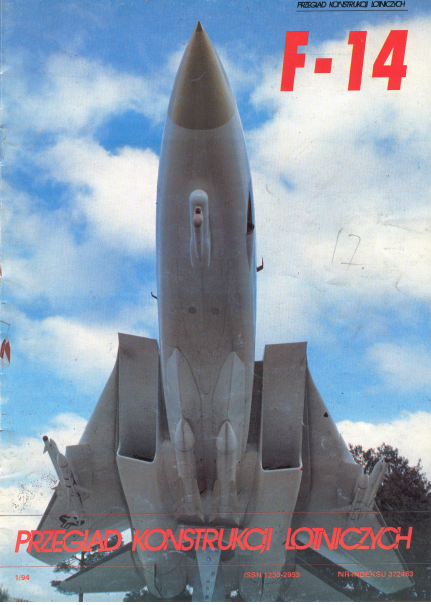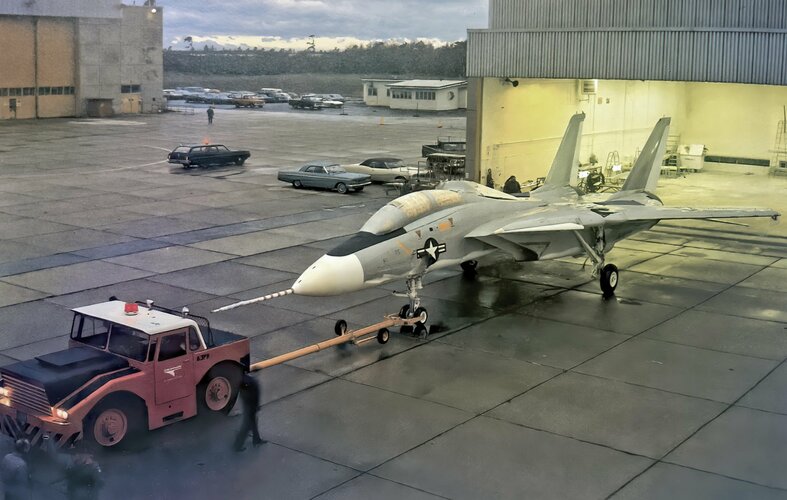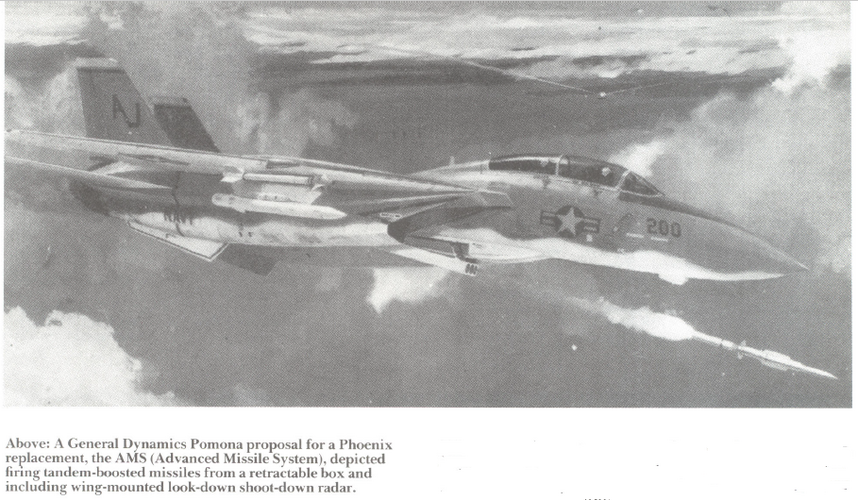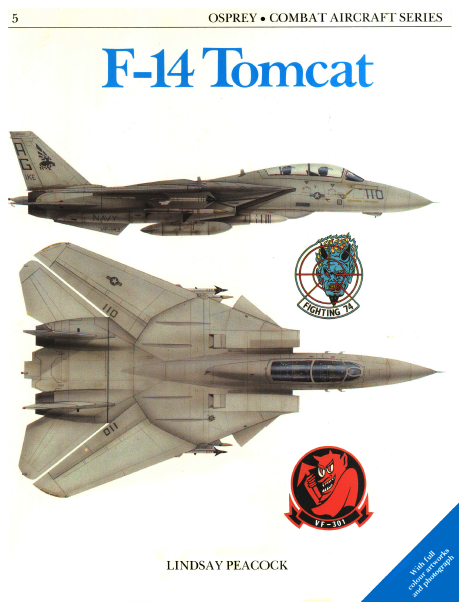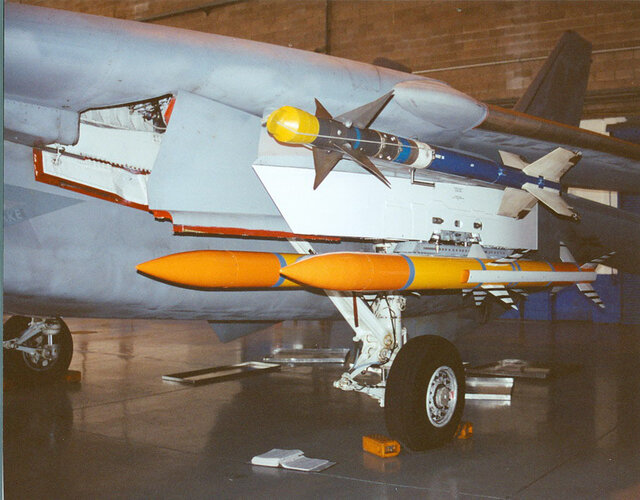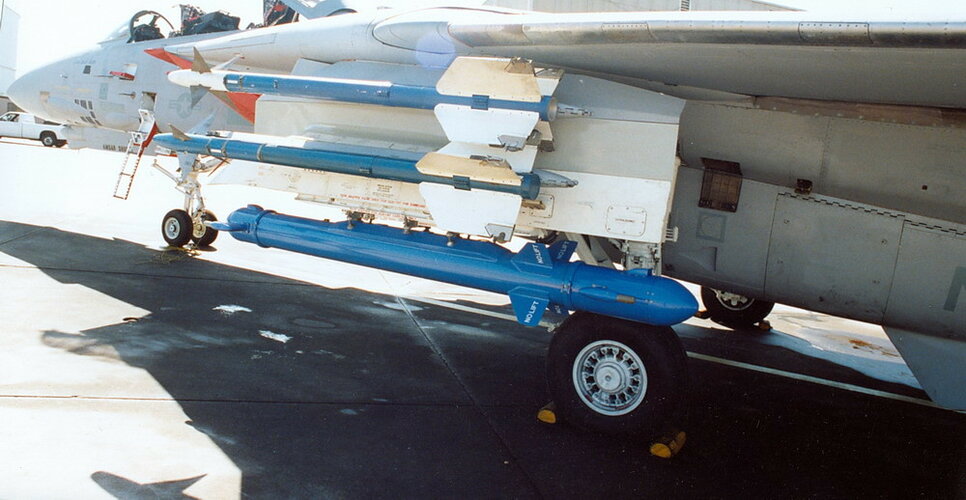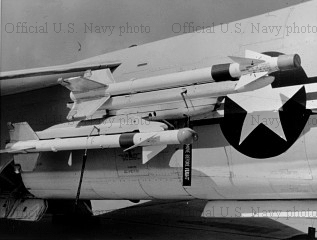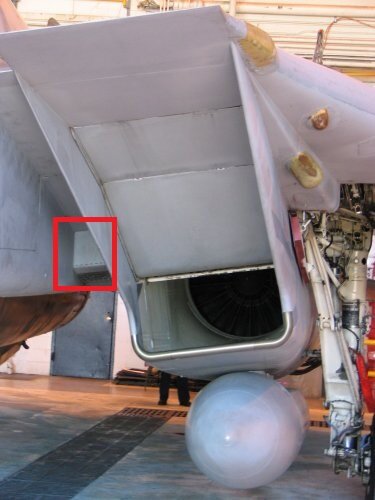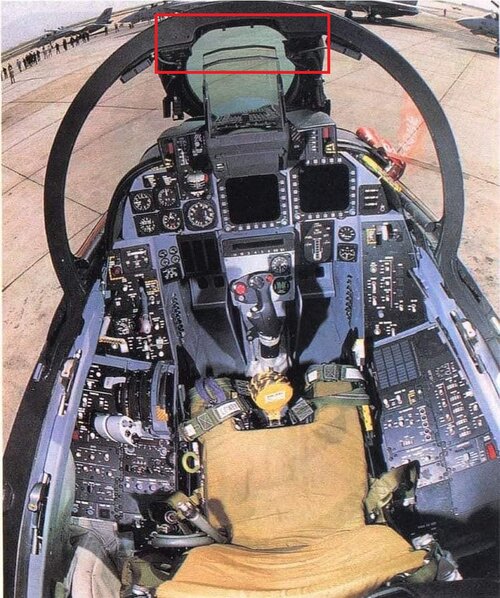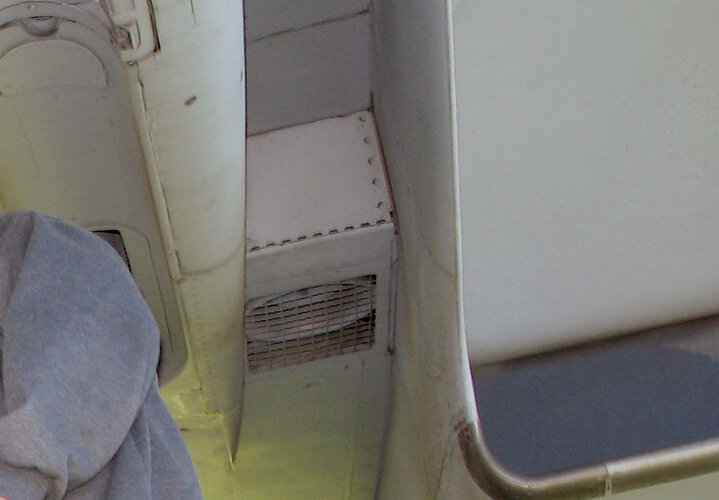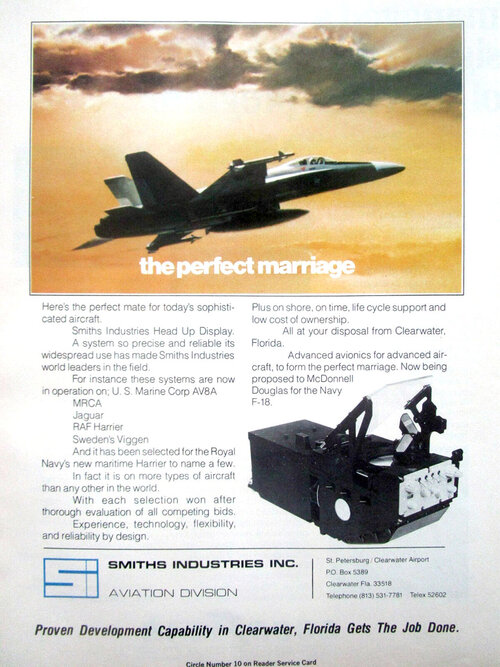Navy Sets F-14 Reengining Schedule
SEPTEMBER 211981
Navy Sets F-14 Reengining Schedule
Washington—The Navy is planning to begin reengining production Grumman F-14 air-superiority fighters with the General Electric F101 DFE derivative fighter engine in Fiscal 1987 and is considering extending the Tomcat's fuselage with a 30-in. plug to increase fuel capacity.
The fighter with these modifications and other improvements to the weapons control system would be officially known as the F-14D. Within the Navy it is being referred to as the Super Tomcat.
With Defense Dept, backing, the Navy plans to procure 24 squadrons of F-14s with at least 15 squadrons modified to F-14D models, starting with aircraft No. 606 on the production line. This would provide 160-175 aircraft configured as F-14Ds, and with attrition, pipeline and training aircraft the number could grow to 234.
The service already has made budget provisions for radar changes in the F-14D to digitize the Hughes AWG-9 radar and provide additional modes—and adaptive scan capability and the capability to see through clutter while in the track mode. Electronic counter countermeasures will be added, including seethrough jamming with low sidelobe antennas.
New computers will be placed in F-14D aircraft along with 1553B multiplex buses, a new stores management system, and new controls and displays. A new digital inertial platform also is a part of the avionics package.
Funding for reengining with the F101 has not yet been provided in the five-year defense plan, but there is a plan to do this among high-level Navy officers, who believe that the savings in engine maintenance and fuel based on life-cycle costing will provide the money to pay for reengining.
Service officials calculate that each F101 engine will cost approximately $3 million, compared with approximately $2 million for each Pratt & Whitney TF30 now in the F-14A models.
in the flight tests now being conducted from Long Island, N. Y., by Grumman test pilots, the Super Tomcat lands with about 1,400 lb. more fuel than the chase F-14A with the TF30 engines, despite numerous afterburner lights not accomplished by the chase aircraft.
Grumman will conduct 21 test flights and the Navy three. The company had completed 12 tests with the Super Tomcat in mid-August, according to Navy officers, and in general terms had discovered approximately a 35% thrust increase with the F101 throughout the flight envelope, with the increase in thrust at the military power level approximately 30% above that of the TF30.
The Navy often operates the F-14As off aircraft carrier catapults using the afterburner and has encountered afterburner stall lighting problems.
Afterburner lighting is significantly improved with the F101, Navy officials said.
During the flight tests with the F-14 configured with the F101, the aircraft completes intermediate climbs without afterburner, while the chase F-14A must use afterburner. The chase aircraft often runs low on fuel before the flight is completed.
The F101-equipped fighter has performed low-speed acceleration from 150 kt. at 25,000 ft. to Mach 1.5 and usually has left the chase aircraft 5-6 naut. mi. behind. In the test program acceleration has been limited mostly to Mach 1.6, with a single test to Mach 2.
Installation of the engines in the Super Tomcat requires no engine trim, according to Navy officers, which is significant in terms of maintenance savings when installing the 26,00029,000-lb.-thrust-class F101 engines.
The 30-in. fuselage plug would permit another 2,000 lb. of fuel to be added to the 19,600 lb. usually carried by the F-14. The plug, according to Navy officers, may actually improve the aerodynamic performance of the aircraft, “but the tactical advantage is the real boost, permitting loiter on combat air patrols for another 22-25 min. with two AIM-7FS, two AIM-9s and two Phoenix missiles.”
With the F-14 As in the fleet it takes approximately 4,400 lb. of fuel per hour on station and requires approximately 2,500 lb. of fuel from takeoff to the edge of the inner defense zone—about 75 naut. mi.—and another 2,000 lb. to the battle group’s outer defense zone—150-225 naut. mi.
The Navy plans to continue production of the F-14 through Fiscal 1994 as it moves toward an inventory objective of 845 aircraft. The service plans to begin in Fiscal 1984 converting A model F-14s to C models with radar improvements, such as medium pulse rate frequency to minimize jamming and provide better resolution.
Computer memory will be expanded and programmable signal processing will be added, as will a target identification system based on software and a television camera system.
The Model C will include upgrades to the TF30-414A engine, improving durability. The aircraft also will be outfitted to handle the Hughes AIM-54C Phoenix missile—a digitized missile. The AIM-54C also has an improved range capability, but the Navy wants a longer-range Phoenix beyond the AIM-54C to take full advantage of the F-14’s 125-naut.-mi. radar range.

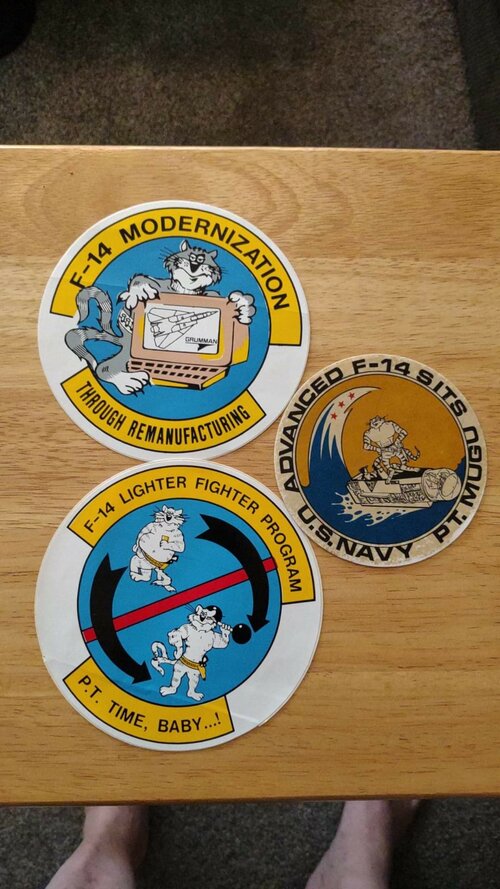
![FY1975_Authorization_for_Militar_Procurement_(Page_5093)_-_F-14X_VFX[1].jpg](/data/attachments/220/220823-06677119f415391610d9df1467957cdb.jpg)
![FY1975_Authorization_for_Militar_Procurement_(Page_5094)_-_F-14X_VFX[1].jpg](/data/attachments/220/220824-433fcab760ec9f754fa223e80f3e75f8.jpg)
![FY1975_Authorization_for_Militar_Procurement_(Page_5095)_-_F-14X_VFX[1].jpg](/data/attachments/220/220825-51b2682efb27c223fe0b7b7e7821348b.jpg)
![FY1975_Authorization_for_Militar_Procurement_(Page_5099)_-_LWF,_F-15N,_F-14X[1].jpg](/data/attachments/220/220826-bd65df8b694de8f3dc5f06d715dd703f.jpg)
![FY1975_Authorization_for_Militar_Procurement_(Page_5100)_-_F-14X_VFX[1].jpg](/data/attachments/220/220827-6754b26a97190b8235f57361b34633e8.jpg)
